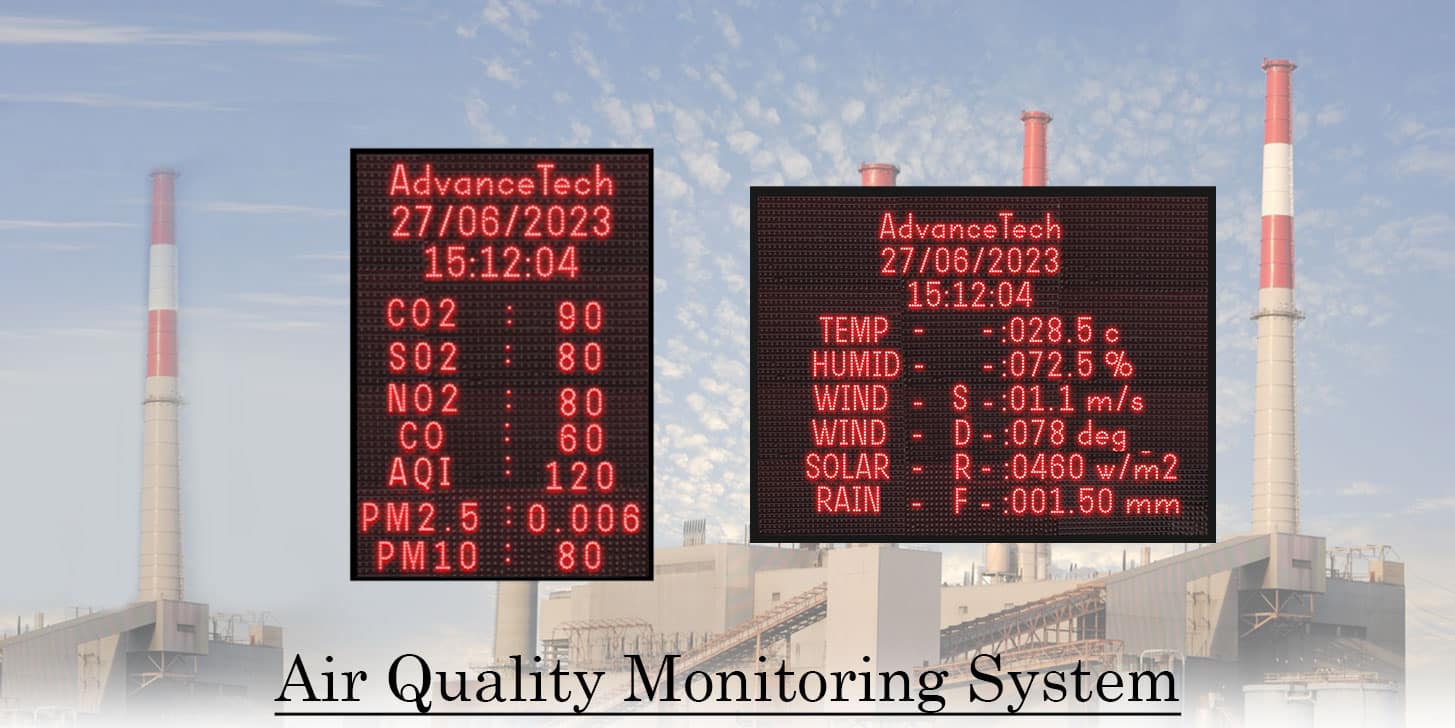In recent years, environmental degradation has highly impacted human health. One of the most urgent problems is air quality, which surely has a bad impact on billions of people. These days, it is difficult to monitor as well as manage air quality due to the high development of industries, urbanization, and traffic emissions. But today’s time is digital time and new technologies are being introduced day by day. One of the best solutions is the Air quality monitoring system (AQMS). In this blog, we will study all about Air quality monitoring systems which includes: the importance of AQMS, its elements, uses, and the application.
Understanding Air Quality Monitoring Systems
Air Quality Monitoring systems are very complex networks of sensors and also networks of devices that help to observe different kinds of air contaminants in the environment. Particulate matter (PM), nitrogen dioxide (NO2), sulfur dioxide (SO2), carbon monoxide (CO), ozone (O3), volatile organic compounds (VOCs), and other pollutants are all observed in current time by using these systems. The information collected aids in observing the quality of the air, locating the sources of pollution, and developing practical mitigation plans.
Components of Air Quality Monitoring Systems
Sensors
The sensors are one of the most important components in AQMS. AQMS uses a number of sensors, In order to observe the various pollutants. These sensors perfectly observe the amounts of pollutants using a variety of approaches, including optical, electrochemical, and spectroscopic methods.
Data Loggers
After sensors, these data loggers are another crucial component. The work of these components is to save the information which is collected by the sensors. They facilitate data analysis and guarantee ongoing monitoring.
Communication Systems
AQMS sends data at the current time and uses communication systems like cellular networks, satellite communication, and Wi-Fi. All these things are possible only because of access to information about air quality remotely and make it easier to act quickly when the pollution level rises above the level.
Data Analysis Software
A large amount of the data that AQMS collects is observed by using complex software. Algorithms are used by the system to observe data trends, locate pollution hotspots, and provide thorough reports for stakeholders.
Working Process
Air Quality Monitoring Systems follow a systematic process:
Data Collection
There is a sensor in the Air Quality Monitoring systems that helps to track the humidity, temperature, pollutant concentrations, and other variable which continually monitor atmospheric air contaminants.
Data Transmission
As the name implies, Communication systems are used to transfer the collected information to a server or to a database. If the person, researchers, and governmental organizations want to receive information or data in real-time on air quality AQMS is very helpful.
Data Analysis
The information is observed by complex algorithms to determine pollution patterns, possible health effects, and causes. There are some Visualization tools, which include maps and charts, that are frequently used to send or receive the data in an intelligible fashion.
Reporting
The AQMS produces thorough reports that include information on possible health hazards, pollutant concentrations, and air quality levels based on the data that has been examined. Public awareness campaigns, urban planning, and policy-making all depend on these studies.
Applications of Air Quality Monitoring Systems
Environmental Health
The AQMS is important in protecting public health since it issues timely alerts regarding dangerous air pollutants. It assists authorities in putting protective measures in place to lessen exposure and safeguard susceptible groups, including kids, the elderly, and people with respiratory disorders.
Urban Planning
Because of industrial processes, urbanization, and vehicle emissions, air pollution in metropolitan areas is frequently very high. Urban planners can better design sustainable cities, pinpoint pollution hotspots, and put emission-reduction and air quality-improving strategies into action with the use of AQMS data.
Industrial Monitoring
Because they release different kinds of pollutants into the air, industries play a very important role in air pollution. To reduce their negative effects on the environment, industries can monitor their emissions, adhere to legal requirements, and put pollution control measures in place with the use of AQMS.
Climate Research
In addition to harming human health, air pollution is a factor in climate change. Researchers examining the relationships between air quality, atmospheric composition, and climate dynamics find that AQMS data is very important.
Possibility for Transformation
Air Quality Monitoring System adoption on a large scale has huge changing possibilities.
Public Awareness: These days, the public understands the importance of air quality and its effects on human health and the environment which is increased by AQMS. People can protect themselves by making the right decisions when they have current time access to data on air quality.
Policy Advocacy: Equipped with reliable data on air quality, advocates for the environment and legislators can call for more investments in sustainable development, cleaner technologies, and stronger laws.
Technological Innovation: Innovation in sensor technology, data analytics, and communication systems is fueled by the development of AQMS.
Conclusion
To conclude, Air quality monitoring systems play a very important role in order to fight against air pollution. It is also very helpful for human health and the environment. By providing current time data on air quality, and identifying pollution sources. AQMS plays a very crucial role in fostering sustainable development and improving quality of life. AQMS contains a sensor for observation.
.






